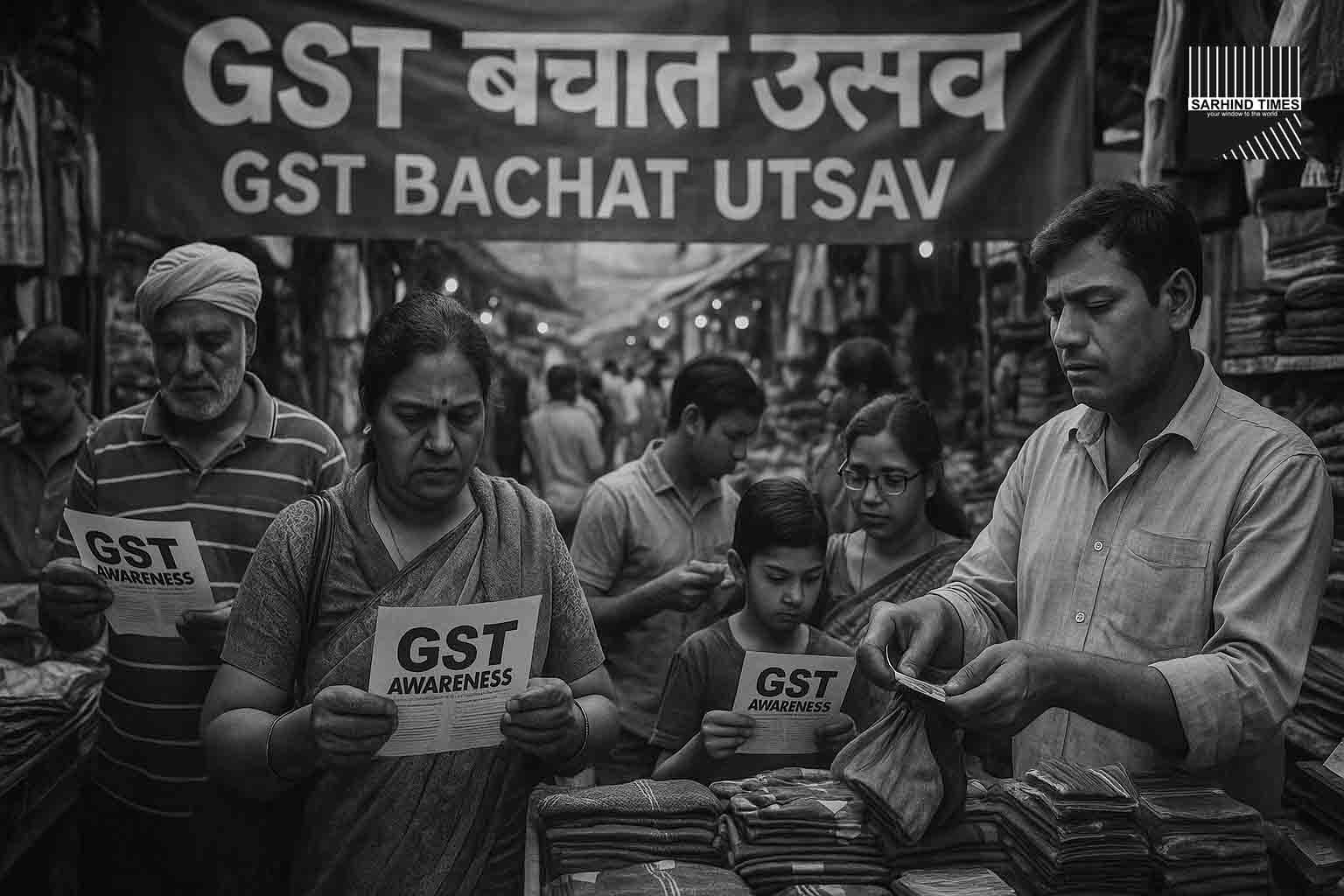Haryana’s Chief Minister Nayab Singh Saini has claimed that the state’s residents stand to save ₹4,000 crore each year under the Centre’s GST reform package. Announcing the figure at an outreach event in Ladwa, Kurukshetra, he tied the benefit to reduced tax slabs on everyday goods, simplified compliance for traders, and an official push to boost indigenous products under a “GST Bachat Utsav.”
The announcement comes at a time when states like Kerala have raised concerns about revenue shortfalls, highlighting the diversity of fiscal perspectives across India. For Haryana, the government is framing reforms as an immediate consumer relief measure and an opportunity to realign retail behaviour toward Swadeshi consumption.
The ‘GST Bachat Utsav’: Design and Messaging
The campaign, set to run until October 15, combines consumer outreach and trader handholding:
- Mass Awareness Drives: Roadshows, pamphlet distribution, and on-ground camps to explain 5%/18% GST slabs.
- Market Mobilisation: Associations in Karnal, Ambala, Gurugram, and Hisar tasked with awareness sessions for vendors.
- Political Messaging: MLAs and local leaders deployed to emphasize that GST reform = direct household savings.
- Swadeshi Angle: Explicit framing that buying Indian-made goods not only supports local producers but also maximizes benefit from lower slabs.
The campaign blends consumer economics with a cultural-nationalist appeal—an approach that aligns with the ruling party’s wider political messaging.
The ₹4,000 Crore Question: Crunching the Numbers
The government’s estimate is based on:
- Lower slabs on high-volume goods (appliances, packaged foods, textiles).
- Pass-through assumptions—retailers will fully reflect new GST tags in MRPs.
- Aggregate consumption data of Haryana households (~2.9 crore population).
But economists caution:
- Elasticity varies: Not all categories see the same demand spike after price cuts.
- Inventory lags: Small traders often clear old stock before repricing.
- Compliance burden: Without digital adoption, small kiranas may delay full pass-through.
Hence, while ₹4,000 crore is aspirational, the real impact depends on execution speed and consumer response.
The Consumer Lens: What Shoppers Can Expect
Short-term wins: Lower shelf prices in organized retail, especially electronics and packaged goods.
Medium-term friction: Transitional lag at kirana stores as old MRPs rotate out.
Long-term gains: Greater uniformity in pricing, fewer disputes over tax rates, improved trust in billing.
Festive timing amplifies visibility: families upgrading appliances, jewellery, and textiles during Navratri-Diwali may immediately perceive GST-linked savings—critical for political optics.
The Trader Lens: Swadeshi Meets Compliance
For small traders, the reforms are double-edged:
- Simplification: Fewer slabs = easier bookkeeping.
- Pressure: Pass-through monitoring and consumer scrutiny tighten margins.
- Opportunity: Swadeshi framing may nudge buyers toward domestic goods, benefiting smaller producers.
Workshops under the campaign are expected to provide checklists for re-labeling, invoice clarity, and input-credit claims.
State vs Centre: Diverging Narratives
While Kerala warns of fiscal stress, Haryana highlights consumer relief. This divergence underscores:
- Political economy: States with stronger GST dependency (Kerala ~41%) view reforms as risky. Haryana, with a more diversified base, sees room to pitch reforms as popular gains.
- Narrative battle: The Centre benefits if states amplify “savings for households” rather than “loss for treasuries.” Haryana’s framing aligns squarely with Delhi’s intended message.
Expert Commentary
- Policy Analyst, Gurugram: “The ₹4,000 crore number is credible only if anti-profiteering enforcement works. Otherwise, savings stay on paper.”
- Retail Association Leader, Panipat: “Awareness drives are crucial. Many small traders don’t know how to reconfigure their GST invoices.”
- Economist, Delhi University: “Positioning the campaign as pro-Swadeshi is politically smart. It links GST to cultural identity rather than just tax maths.”
Outlook
With GST 2.0 now active, Haryana is betting on a consumer-first narrative. Whether savings of ₹4,000 crore materialize or not, the GST Bachat Utsav reflects how fiscal policy is being tied directly to public perception, retail behaviour, and political campaigning.
The next month will show whether Haryana’s shelves deliver on the promise—or whether inflationary pressures and compliance frictions dilute the gains.
#Haryana #GST #Savings #EaseOfDoingBusiness #Swadeshi #FestiveSeason #ConsumerRights #Economy

























+ There are no comments
Add yours